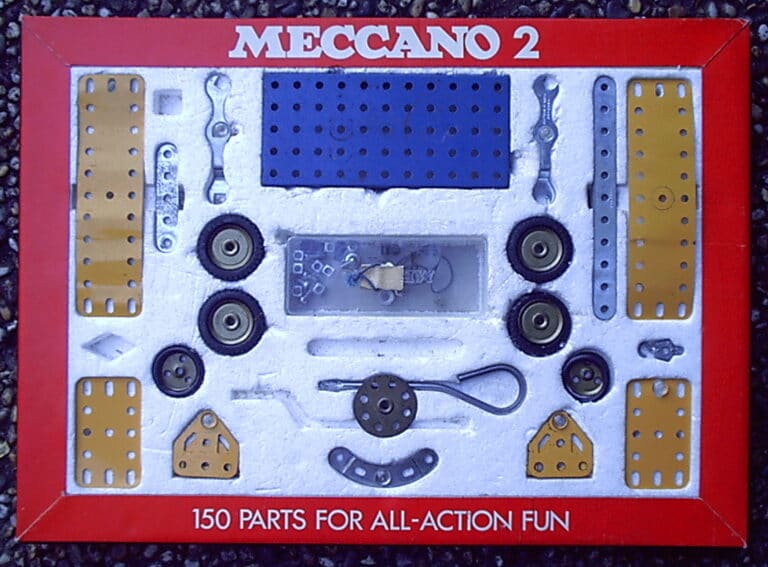Great customer onboarding is the key to sustained profit.
Customer onboarding has gone a long way in the past thirty years! I remember the hours I spent setting up my first PC back in the eighties with some form of nostalgia. The hardware felt like a Meccano game that could go wrong in so many ways! And in those pre-Internet days, unless you had a Mac, you needed to know your MS-DOS commands to do anything with your computer.

Nowadays, with pervasive computing and always-on connectivity, the culture of instant gratification prevails, and tech companies have become obsessed with optimizing their customer onboarding experience. I don’t blame them. Research repeatedly shows that customer acquisition can cost up to seven times more than selling to existing customers. So, you’d better cherish your customers once they’re in and do everything to delight them, so they stick with you in the long-term.
As a product leader, I’ve caught that bug too and spent a disproportionate amount of energy optimizing the out-of-box experience (OOBE) and customer onboarding in general. It’s well worth it, and here are a few of the critical lessons I’ve learned along the way.
#1 - Successful customer onboarding = profit

Successful companies know a proper customer onboarding can make the difference between a profitable business and a cash-bleeding operation doomed to fail. But, let’s get some adequate definition out of the way:
Customer onboarding is about introducing your product to your customer. The best onboarding experience will aim to get your customer up-and-running effectively. The more early wins you give, the more they will be delighted, wanting to keep using your product more and more.
Successful customer onboarding truly matters. If you fail to delight them, that first bad impression you leave will come back and haunt you when the time comes for them to update or upgrade. You’ll lose these customers for good. In the consumer space, it’s not unusual to see customers returning products to the store and hit rates as high as 30%. Retailers now have a policy of no questions asked. It makes a bad first experience a primary cause for product returns. Quite a costly business model!
Yet, most companies still focus primarily on customer acquisition. I get it; you need to build a customer base in the first place. But less than 20% of companies out there admit they focus on customer retention. It means most businesses are still not using that low-hanging fruit of acquired customers. They should! It’s much less expensive to extract value from existing customers than from brand new clients. I trust you get it: if you want to sustain a profitable business, invest in building the right customer onboarding experiences!
#2 - Deeply understand your customers' goals

Customer onboarding is not necessarily about showing them everything you have to offer. It’s first about making sure they reach their goals and do it in a timely fashion. When your customers decided to invest in your product, they had specific goals and desired outcomes in mind. You need to understand these goals. One element of tension I’ve experienced was when the different teams would not agree on who the customer was and what their problems were. It would create significant uncertainties and unwelcome interpretations.
Team dynamics suffer when you don’t have a crisp shared understanding of your target audience, core problems, and how they think.
So, do your homework. Understand customers in-depth through the continuous qualification of their core problems. Use frameworks like the JTBD (Jobs-To-Be-Done) method to better articulate these problems in their context. Keep prioritizing these problems, as highlighted in my previous article on the topic. As you progress, take the time to integrate your learning into personas (fictitious characters representing your target customers). It can turn into the common language between designers and product managers, between marketers and sales teams, or even between product teams and senior executives.
Developing the right personas and ensuring all functions have one single integrated view and definition of the customer will help align everyone. You’ll have clarity on who the target is, what goals they have, what needs to be built, where, and how it will sell.
#3 - Know the rules of user-centric product design

We’ve all seen great design in action, from smooth unboxing to controls that don’t leave the user guessing how to turn the product on or mute the volume. You don’t need to be Apple to provide superior onboarding experiences. Just apply the following rules:
- Clear feedback. Set expectations for your customer on where they stand in the process. Who doesn’t want to know when and where they will hit their destination? The methods vary. These can be progress bars when installing a new application or a well-written quickstart guide that sits on top of the unboxing experience of a new device. They’re here to help motivate the customer to finish the process, and it works!
- Simplify and educate. Take your customer by the hand. Show them how they will get stuff done while breaking things down into chewable chunks. It will feel less overwhelming to them. Consider an accounting application, for instance. You can create a step-by-step tutorial for them to generate their first invoice. The tools and formats you can use are endless (from simple scripts to sophisticated embedded videos). Making each step simple and small will turn into a quick–win that encourages them to explore further.
- Stick to the essentials. Do you need a full address for your customer to start using your product and achieve their first goal? Every question you ask your customer is another step between you and their goals and increases the risk they will give up. Every business has different needs, but consider streamlining your questions to the necessary. You can always ask more once your customer has a few wins under their belt. An alternative approach is to make some of these steps skippable. It’s not as streamlined, but you leave it up to your customer the decide which is still better than imposing an option on them.
#4 - Gather feedback and go beyond the product

No matter how well you’ve built your product, bad stuff will happen during customer onboarding, and it’s critical to keep a strong pulse on the experience. In the world of tech, it’s now easier than ever to build-in direct feedback mechanisms into your applications and take your users by the hand. There are many ways you can control the onboarding process, and multiple services help you standardize its execution. I highly recommend you look into how such workflow and business process management services can help you. Tools will vary, but the most critical is for you to establish a process that will allow the product teams to obtain, analyze and act on customer feedback.
Along these lines, don’t limit the customer onboarding process to the sole setup of your SaaS product or the installation of your device.
Great customer onboarding is not only about your product design. It’s about every single touchpoint they will have with your company from the moment they first hear about you to the very end of the customer lifecycle.
Ensure your teams are obsessed with all these touch points and optimize them, including every marketing deliverable, customer success, and support. The most successful companies have built systems to gather feedback on every touchpoint systematically. Most importantly, they act on that feedback and continuously improve the customer experience.
How is your customer onboarding doing?
Customer onboarding is undoubtedly a key piece in your customer journey. Make it shine, and chances are you will enjoy repeat business for the long-haul. It doesn’t have to be overly complex. Follow the few principles highlighted in this article. You will be better off than the vast majority of companies out there.
So, step back and think about the best ways you can create superior customer onboarding experiences. The following questions will guide you on that journey:
- How clear are you on your customers’ goals with your products?
- Have you developed personas that every team, from design to marketing, is using consistently?
- What feedback do you currently receive from your customers on their onboarding? How do you act on this feedback?
- What is the single most important negative feedback you keep hearing from your customers on their onboarding? What are you doing about it?
Keep digging, and if you come to a point where you feel stuck, just reach out tanguy@theproductsherpa.com. I’ll be delighted to talk it through.
